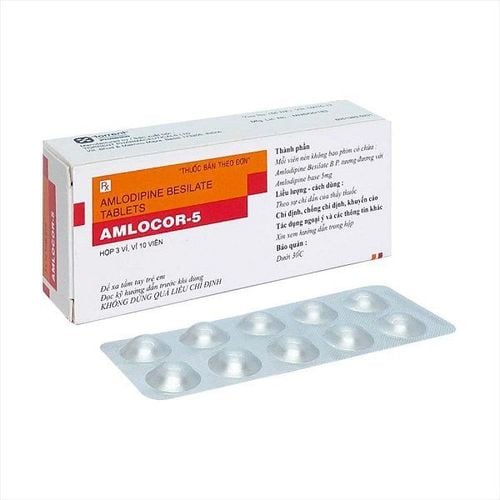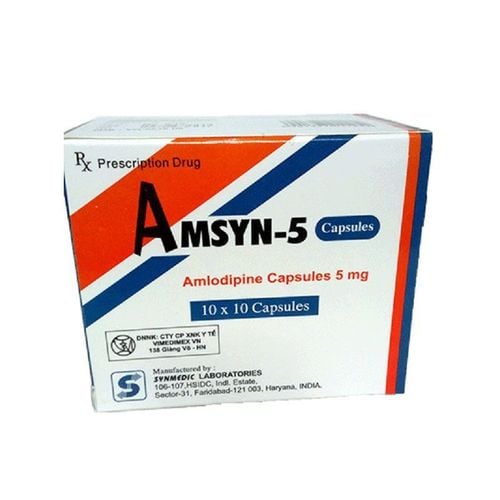This is an automatically translated article.
The article is written by Master, Doctor Nguyen Van Phong - Internal Medicine and Cardiovascular Interventionist, Cardiovascular Center - Vinmec Times City International General Hospital.
Chronic ischemic heart disease, also known as stable angina, is a common cardiovascular disease and tends to increase sharply in developing countries.
Typical angina pain includes the following 3 features:
Pain like strangulation, pain like tightness or pressure in the left chest or behind the breastbone, can spread to the chin, left hand. Appears with a regular nature, increases after exertion, strong emotions, cold encounters... The pulling time is usually 3-5 minutes. Chest pain relieved at rest or after taking nitroglycerin.
1. The relationship between myocardial ischemia and angina
Chronic ischemic heart disease usually occurs when the coronary artery lumen is narrowed, reducing blood flow to the corresponding myocardial area, not meeting the myocardial oxygen demand, causing chest pain. A complete blockage of a coronary artery will cause myocardial infarction, which is the leading cause of death in patients with cardiovascular disease.
In many cases, people with ischemic heart disease will not see any symptoms (this is called silent ischemia). However, the majority of patients will experience symptoms such as:
Angina . Shortness of breath, most evident with strenuous activity. Tired and tired limbs. Nausea. Sweating, heart palpitations, palpitations. Dizziness, dizziness.

2. Angina - a typical manifestation of ischemic heart disease
Typical manifestations of chronic ischemic heart disease are angina pectoris that occurs when exertion, stress, strong emotions, or sudden increase in blood pressure... If this condition If the patient appears frequently and for a long time without detecting it and taking timely measures, it will cause myocardial infarction due to sudden myocardial ischemia.
2.1. Causes of Angina Angina pectoris caused by ischemic heart disease occurs when the level of oxygen supply to the heart muscle is deficient compared to the demand. In principle, all oxygen supplied to the myocardium is supplied by the coronary arteries, if coronary atherosclerosis blocks them, they will cause ischemia to nourish the heart muscle. chest pains.
2.2. Stable angina Stable angina usually occurs in patients with ischemic heart disease during strenuous activity, patients can feel the pain in advance and they occur in a short time (approx. 5 minutes), the pain may radiate to the hands, back, or other parts of the body.
In some cases, the patient will not see the pain clearly, but only feels heavy and uncomfortable in the chest, others have a feeling of stiff jaw when trying, some have angina when trying hard. the first time, then pain relief with similar intensity activity.
2.3. Unstable angina is chest pain that occurs even when the patient is at rest without physical activity. Angina can occur at any time, is not related to exertion, lasts longer than usually 10-15 minutes, feels like the chest is constricted and has a frequency of many times.. Angina pectoris It can then spread to other places such as the arm (especially the left arm), neck, shoulder, jawbone. In some cases it can make people feel nauseous, short of breath, sweaty, exhausted.
Unstable angina is an emergency, the patient needs to go to the hospital immediately for timely examination and treatment.
3. How is ischemic chest pain treated?

Treatment of angina is synonymous with treatment of ischemic heart disease including medical therapy, coronary revascularization by intervention or surgery.
When there is an indication for coronary angiography, the patient will be carried out according to the coronary lesions and suitable for intervention (coronary stenting) or surgery. Patients will be consulted to choose the optimal treatment method suitable for themselves.
In Hanoi, when the patient has symptoms of angina, the patient can be examined and screened for ischemic heart disease at the Heart Center - Vinmec Times City International General Hospital, here. One of the leading spearhead centers of Vinmec Times City International Hospital, the Cardiology Center's team of experts includes experienced, reputable professors, doctors, specialists, Modern equipment, fully invested and optimized, with a system of clinics, operating rooms, interventions and inpatient rooms meeting international standards JCI (Joint Commission International) are arranged at the hospital. for each specific area.
To improve the quality of medical examination and treatment, the Center is setting up specialized clinics in the fields of: heart failure, arrhythmia, myocardial ischemia, vascular disease, congenital heart ...
Please dial HOTLINE for more information or register for an appointment HERE. Download MyVinmec app to make appointments faster and to manage your bookings easily.














